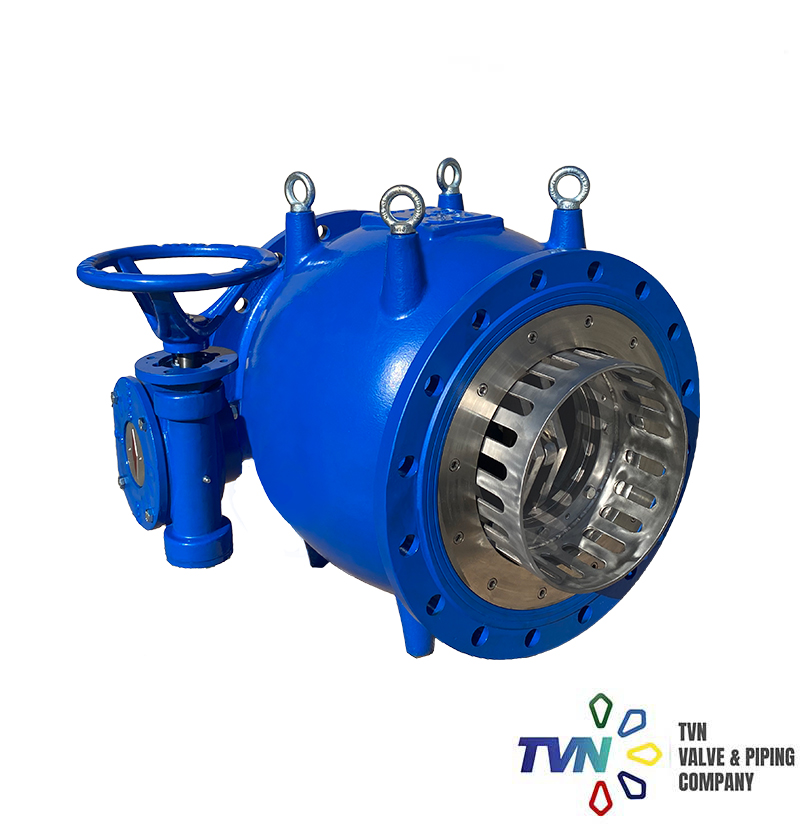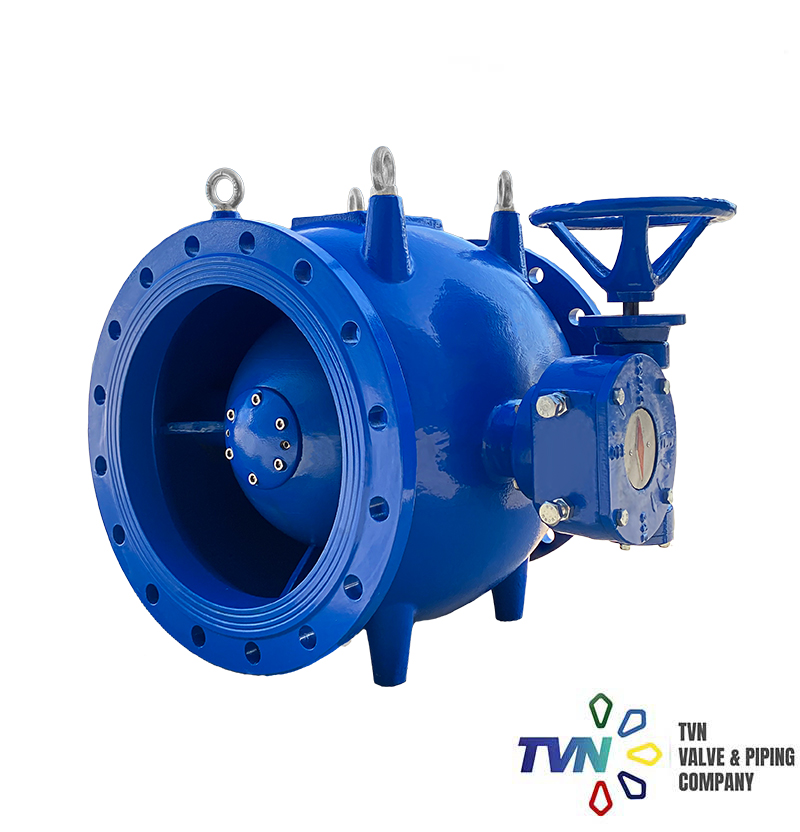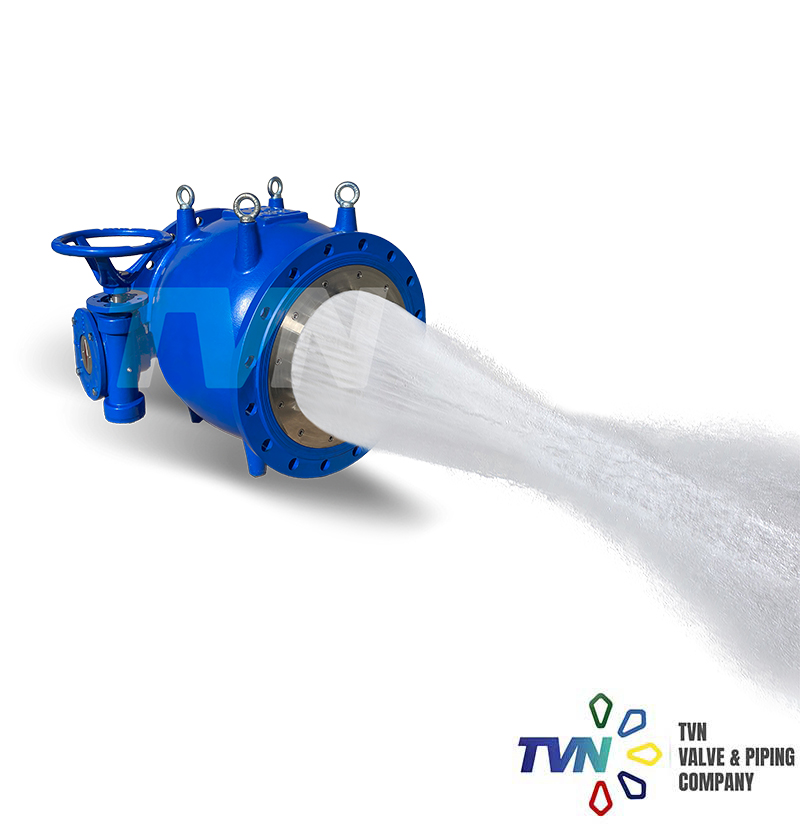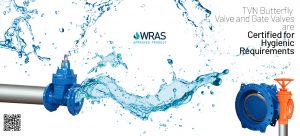Download PDF Data Sheet
V901 Plunger Valve is the correct valve to use whenever pressure heads or flow rates need to be safely and reliably reduced and controlled. The flow regulation is done via the axial movement of a piston, operated by a rod and crank mechanism. To be able to control the pressure and flow precisely and finely, the valve’s flow control characteristics must be as linear as possible over the whole opening range. This forms the core design criteria of V901 Plunger (Needle) Valves.
Application Range
- Pumping Stations
- Reservoir and Turbine Inlet
- Shut o valve for high pressure and high flow velocity
- Bottom Outlet Valve for Dams
- Turbine by-pass
- Pressure Control and Flow Regulation
Related Products
- V106 Butterfly Valve Series 14
- V151 Gate Valve
- V202/203 Check Valve Tilting Type with Lever & Weight / With Hydraulic Damper
- V251 Dismantling Joint Full Tie Rod
Product Features
- High corrosion resistant internal materials
- Lower torques at high pressure rates
- Suitable for flow adjustment
- A ring shaped symmetrical cross section that enables a linear control curve over the entire control range
- The piston’s linear movement results from conversion of the rotary movement of the actuator shaft by the internal slider crank mechanism and ensures a well defined ring-shaped cross- section in every position
- Flow streams do not hit each other until they reach the middle of the valve or pipe, which reliably prevents cavitation damage to the valve
- Provides a ring-shaped cross-section in every piston position
- Reliable energy conversion in the middle of the flow stream, which significantly minimises any e ffects of cavitation
- Butterfly and gate valves, due to their design as isolation or shut-o valves are not suitable for continuous use as a variable flow control valve, with the unique design properties V901 Plunger Valves are able to control the flow continously
- Through the Computerised Fluid Dynamics (CFD), a very high efficient and optimised plunger valves is designed
- Controls energy conversion from inlet to outlet
- The piston is positioned in the center of the valve body and operates in a chamber precisely shaped in order to avoid noises and cavitation damages
- For proper installation 10 X DN distance of a pipe length should be considered







